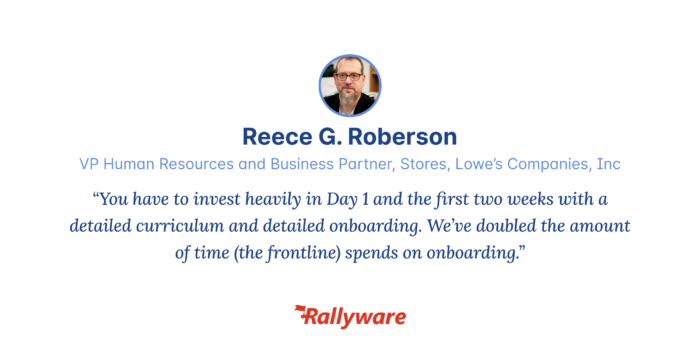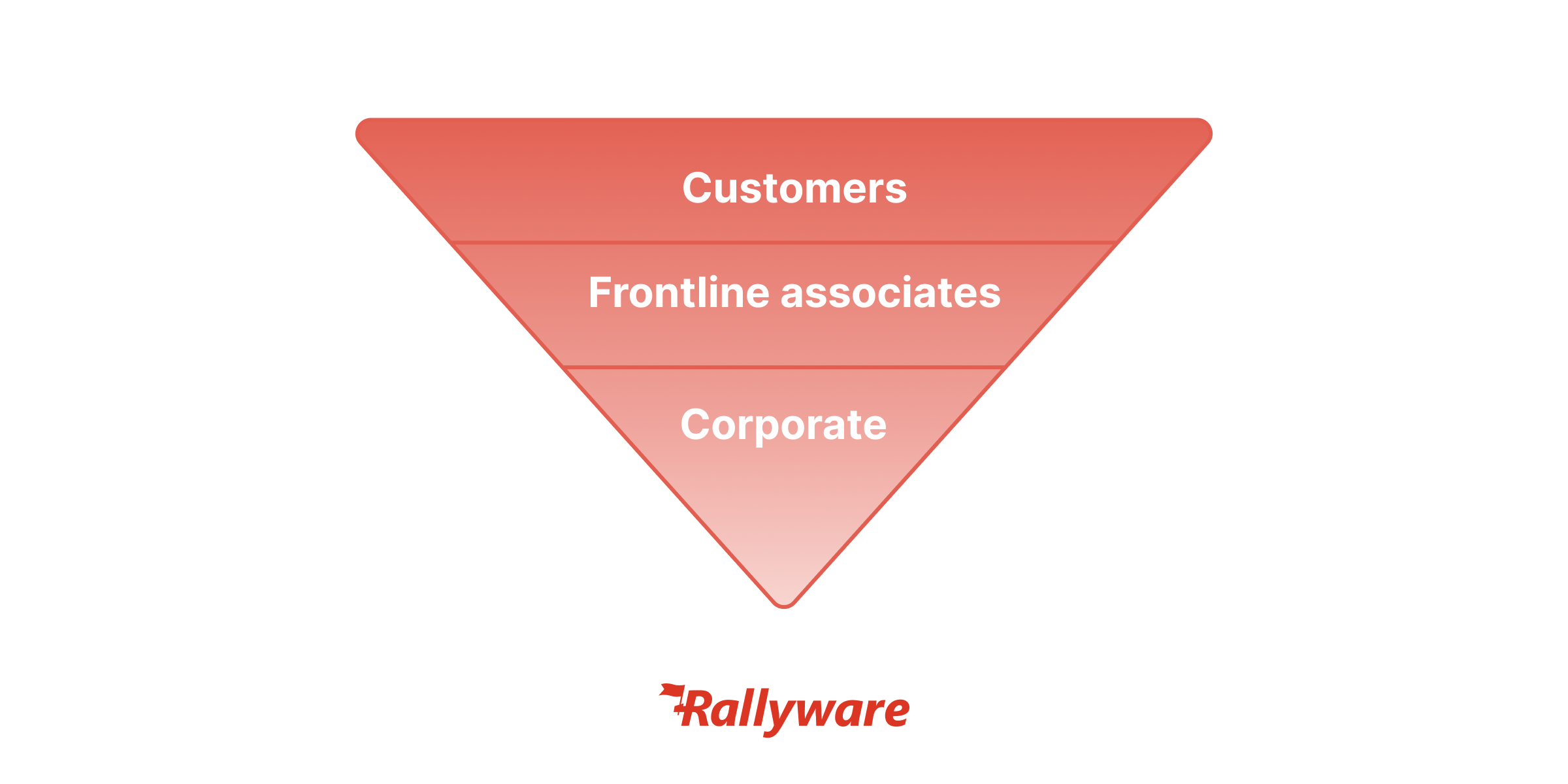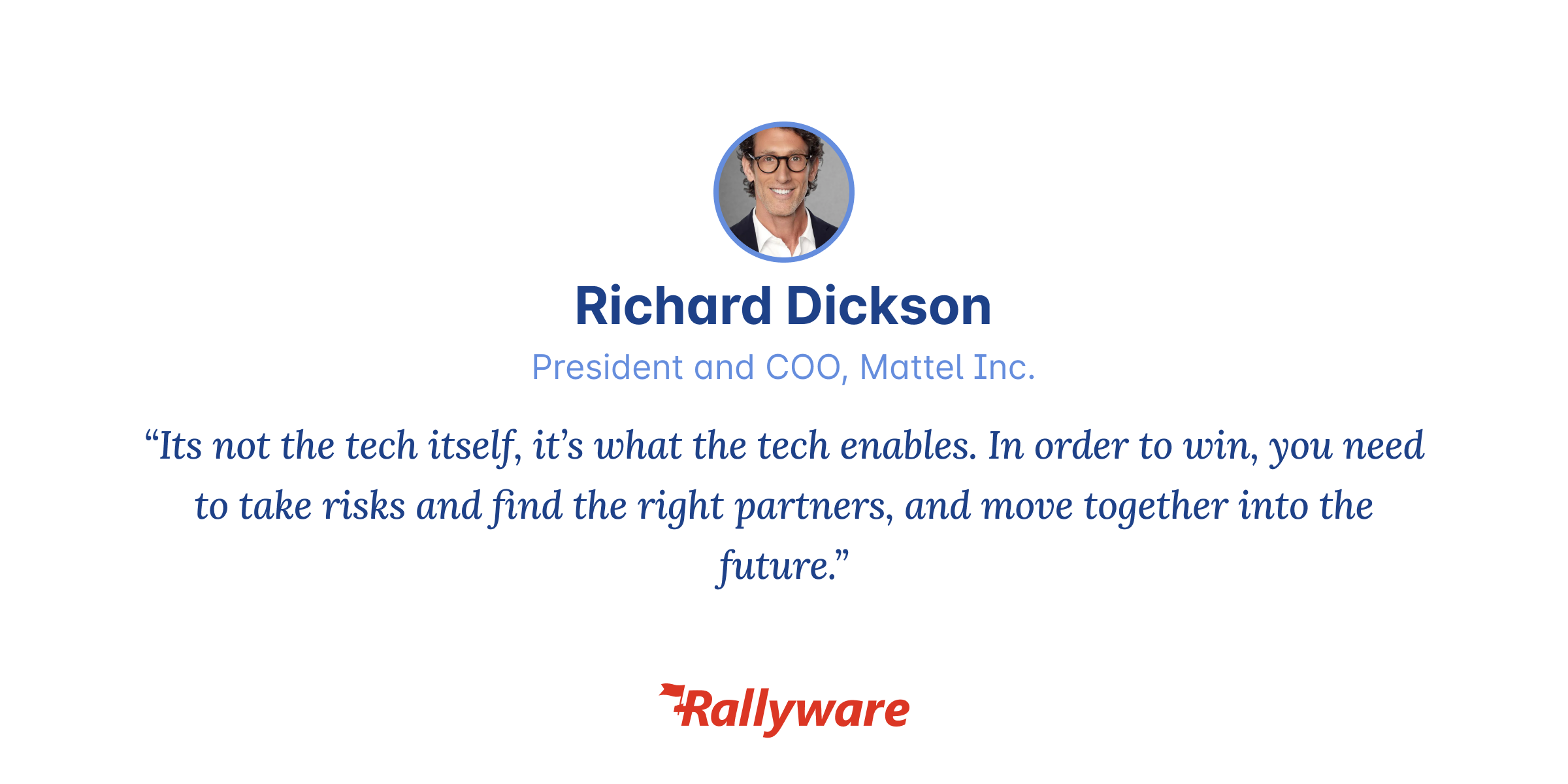Rallyware’s 10-Year Anniversary: a Decade of Performance Enablement
NRF Insights: How Retail Leaders Win At Workforce Motivation
This year’s National Retail Federation’s Big Show (#NRF2023) brought together retail leaders from across sectors and countries to discuss the most pressing issues facing retail today and into the future. Among the topics considered — supply chain innovations, demographic trends, the evolving role of technology in omnichannel enterprises — the challenges and opportunities of distributed workforce motivation topped executives’ priorities. Leaders from Pepsi Co. to Abercrombie to CVS Health to Lowe’s described the urgency of frontline investment to enable and sustain the retail employee engagement necessary to drive growth and deliver for customers. Below, key insights from retail leaders winning at workforce motivation.
1. Deliver Robust, Seamless Onboarding in a Single Sign-On Employee Experience
While high workforce motivation may seem like a given in the first few weeks of employment, messy, legacy systems for onboarding can (and often do!) overwhelm and confuse new hires, immediately jeopardizing retail employee engagement. But delivering an effective onboarding experience is harder than it may seem.
There’s so much to communicate in the first few weeks of employment— not just backend admin tasks which need to be completed but company mission, long-term and short-term KPIs, product knowledge, clienteling protocols, organizational culture pillars, and on. How are retail leaders managing the onboarding process to keep workforce motivation high from Day 1? One crucial strategy is investing in a seamless, single sign-on employee experience.
Lowe’s VP of Human Resources Reece G. Roberson described how investing in onboarding has yielded ongoing returns for Lowe’s in increased retail employee engagement and employee retention. “You have to invest heavily in Day 1 and the first two weeks with a detailed curriculum and detailed onboarding. We’ve doubled the amount of time (the frontline) spends on onboarding.”

While it may seem counterintuitive to extend the time spent on onboarding, retail leaders winning at workforce motivation know that the first two weeks are one of the most significant levers in informing the rest of the employee’s experience. Building early momentum is crucial for employee engagement; early wins on the sales floor set a successful context for frontline associates to continue to thrive in. It’s simple psychology: people who are doing well want to keep doing well. By investing in the most effective possible delivery of the knowledge and tools distributed workers need to start with bang, retail leaders are really investing in long-term retail employee motivation. Whether you’re using workforce analytics software or performance enablement platforms to get it done, motivation is huge.
But what is the most effective possible delivery of knowledge and tools for distributed workforces? Optimizing employee experience for ease and simplicity is key. That’s why retail leaders deliver their onboarding as part of a seamless, single sign-on performance enablement platform like Rallyware’s. By providing onboarding on the mobile technology their frontline employees are already using, retailers optimize for both engagement and visibility at all levels of the organization. It’s an investment that pays off: according to research, great employee onboarding can improve employee retention by 82%.
2. Invest in Personalized Career Development to Boost Retail Employee Engagement
Traditional approaches to frontline retail employee retention and engagement have focused on immediate concerns like pay and scheduling. While the daily dimensions of retail work remain important, the discussion of meaningful retail employee engagement and retention has grown to include long-term career development. “We are always working on building better jobs,” said Marie Ford, VP of CX at CVS Health, and went on to describe how it’s become a priority to be transparent and diligent about career pathing for frontline retail employees.
It makes sense: recruiting and onboarding have always been huge cost centers for companies, and have only become more challenging as the labor market continues to favor job seekers in big ways. According to a Forrester presentation, there were 10.5 million jobs open in December and only 5.7 million people unemployed. This climate has companies not looking to just keep their employees, but to keep them for as long as possible.
As always, the question is how. In a word: personalization. Retail leaders like Nordstrom know that one size does not fit all when it comes to career paths. “Some sellers want to make a lot of money on the sales floor, some want to move to corporate,” said Jessica Cloutier, Senior Director of Styling at Nordstrom Inc.
One reason performance enablement is the new normal for the distributed workforce experience is the need for this kind of individuated frontline career mapping. Managing individualized pathways for companies with thousands of retail associates has been impossible to achieve at scale until now. Rallyware’s PEP allows each frontline associate to input their own goals and uses their personal performance data to surface the right activity at the right time to achieve them. Both retail employee engagement and retention soar when every member of the frontline is equipped with a personal career coach in the palm of their hands. Rallyware’s partners see 43% higher retention with performance enablement.
“We use an inverted pyramid model,” said Cloutier to describe Nordstrom’s approach to stakeholder prioritization. The customer is at the top, and the frontline is right beneath them. When it comes to workforce motivation, few things are more powerful than meaningful, achievable career development.

3. Find the Right Technology Partner to Increase Sales Performance
Of course, sales performance is the heart of retail. And in an increasingly competitive and complex marketplace, it’s become more and more difficult for in-house and legacy tech to meet new consumer needs. Shoppers today expect a frictionless, personalized experience many frontline associates fail to deliver due to outdated or insufficient technology. The research about this says it all: many of the top reasons sales are lost in stores come down to retail employee performance ranging from low product knowledge to unfriendly service.
To increase sales performance, retail leaders are taking a clear-eyed approach to their technology stacks. Richard Dickson, COO of Mattel Inc., described the rock-and-a-hard-place conundrum many companies face when it comes to tech investment: they need transformative, specific technology to increase sales performance, but they don’t have the capacity or desire to build it themselves. Retailers must find the right technology partners to work with in order to achieve their visions.
“It’s not the tech itself, it’s what the tech enables. In order to win, you need to take risks and find the right partners, and move together into the future,” said Dickson.

Performance enablement platforms like Rallyware are true business partners in delivering digital transformation. By integrating with any existing technology and white-labeling the UX for consistent corporate identity, Rallyware’s PEP is visually and effectively indistinguishable from an in-house solution, but powered by market-leading data science. And, again, the results speak for themselves: Rallyware’s partners increase sales performance by 32%.
To motivate and engage your workforce, you’ll need the right technology – a platform using context and data to trigger the right activities at the right times for the right behaviors. Click here to see Rallyware in action or read more about our performance enablement suite.
News and Insights on Workforce Training & Engagement
We’re among top-notch eLearning and business engagement platforms recognized for effective training and talent development, helping to empower distributed workforces
Subscribe
